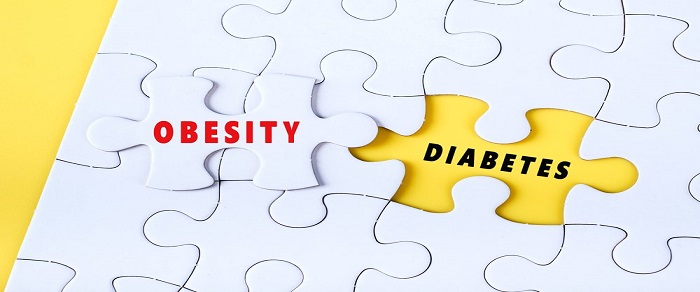Obesity has been described as the major pandemic of the 21st century and an impediment to diabetes. Estimates of the prevalence rates of obesity vary, but by rough estimates, up to 30% of the population in most developed countries is obese. While obesity is a problem of the underprivileged classes in the West, it is a disease of prosperity in India. As more and more individuals and families break out of the grip of poverty, it increases the risk of obesity can also be expected to go up.
Definition of obesity
Obesity is qualitatively defined as a condition in which excess fat gets accumulated in the body to the extent that it causes adverse effects on health. Most of the classification systems use the body-mass index (BMI), waist circumference (WC) or waist-hip ratio (WHR)
BMI is calculated as (weight in kg)/(height in m)2
The BMI is used by the world health organization in its classification of obesity, whereas WC, WHR are indices of abdominal obesity
Indian classification of obesity
It has been long noted that the health consequences of excess adiposity start at a much lower level of BMI in Asians compared to Caucasians
| BMI (kg/m2) | Classification |
| <22.9 | Normal |
| 23.0-24.9 | Overweight |
| 25.0-29.9 | Obese |
Types of obesity
Android or central or visceral obesity- Here the body has the shape of an apple. The fat accumulation occurs mainly above the waist
Gynoid Obesity-Here the body shape resembles that of a pear. The fat accumulation occurs below the waist. This type of obesity occurs mainly in females.
Diabetes and obesity
Obesity, particularly visceral obesity is a strong risk factor for type 2 diabetes. Increased depots of visceral adipose tissue lead to increased delivery of free fatty acids to the liver, which can lead to development of insulin resistance in this organ. In contrast to subcutaneous fat, visceral fat is a metabolically active tissue which releases a variety of adipocytokines and inflammatory mediators which can cause further reduction in insulin sensitivity.
Obesity increases the risk of hypertension, dyslipidemia, cardiovascular disease, gall stones, polycystic ovary syndrome and certain malignancies. A person who is overweight or obese at age can expect to die 3 to 10 years earlier than a contemporary who is lean.
Management of obesity
The treatment of obesity requires a multi-pronged approach and involves input from the patient, physician, dietician, and other members of health care team.
Medical nutrition therapy is important for initial weight loss as well as maintenance of the weight loss. The more extreme diets are not advisable unless they are willing for close medical supervision. Physical activity is more important in preventing weight loss, preventing weight regain rather than in achieving initial weight loss. A minimum of 30 to 45 minutes of moderate intensity physical activity 3 to 5 days a week should be aimed at initially. The duration and intensity of exercise can then be gradually increased.
Bariatric surgical procedures aim to reduce nutrient digestion and absorption by altering the anatomy of the gastrointestinal tract. It is one of the few interventions that can cure type 2 diabetes.
Conclusion
It is essential to screen for obesity, pre-diabetes and diabetes. The best treatment for diabetes is prevention. Prevention of diabetes can be accomplished through a 7% weight loss through intensive lifestyle interventions that include caloric reduction and approximately 30 min of daily moderate physical activity.
Thus better nutrition, increased physical activity, and control of blood glucose levels can delay the progression and act as an impediment to diabetes and help prevent the complications associated with the obesity and diabetes





One thought on “Obesity- An Impediment to Diabetes”